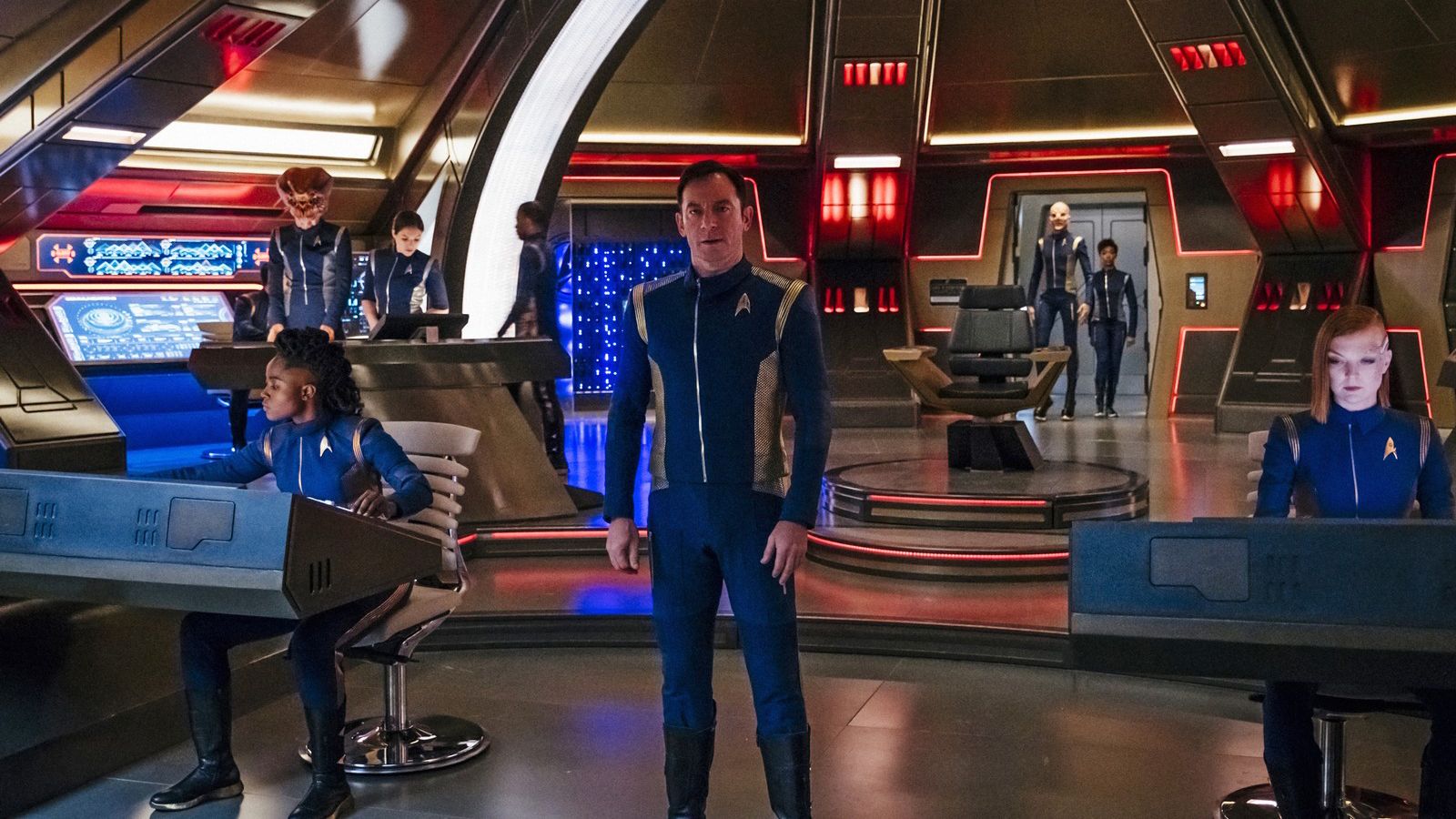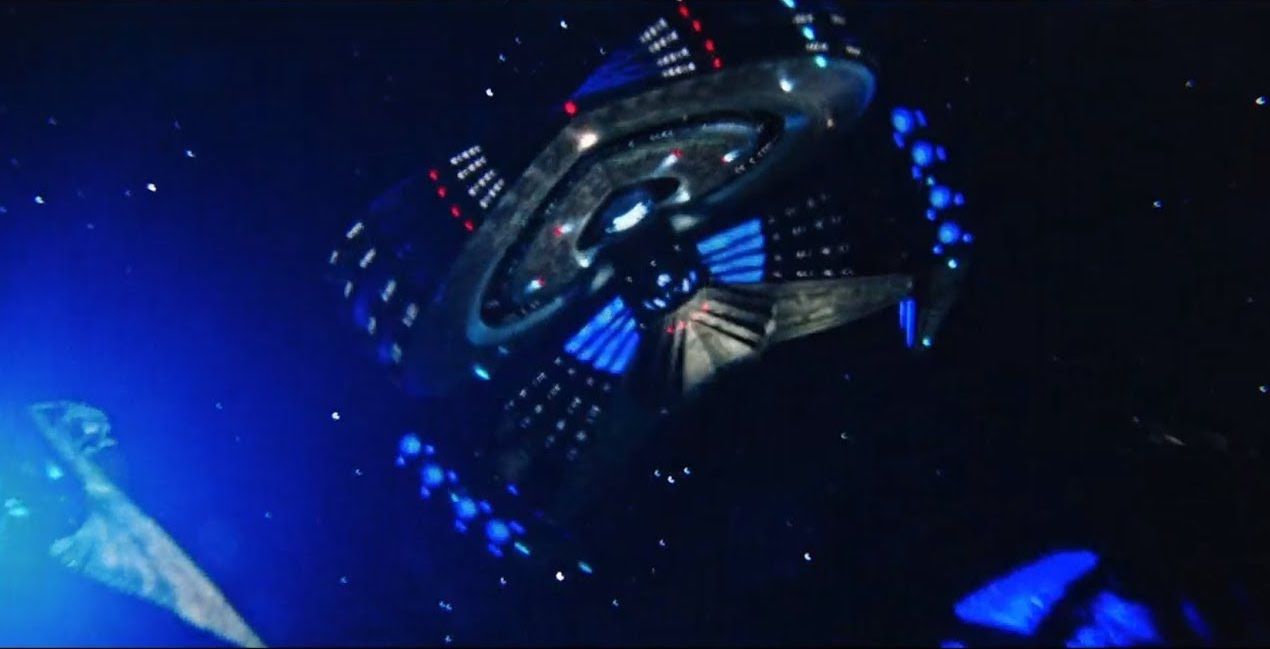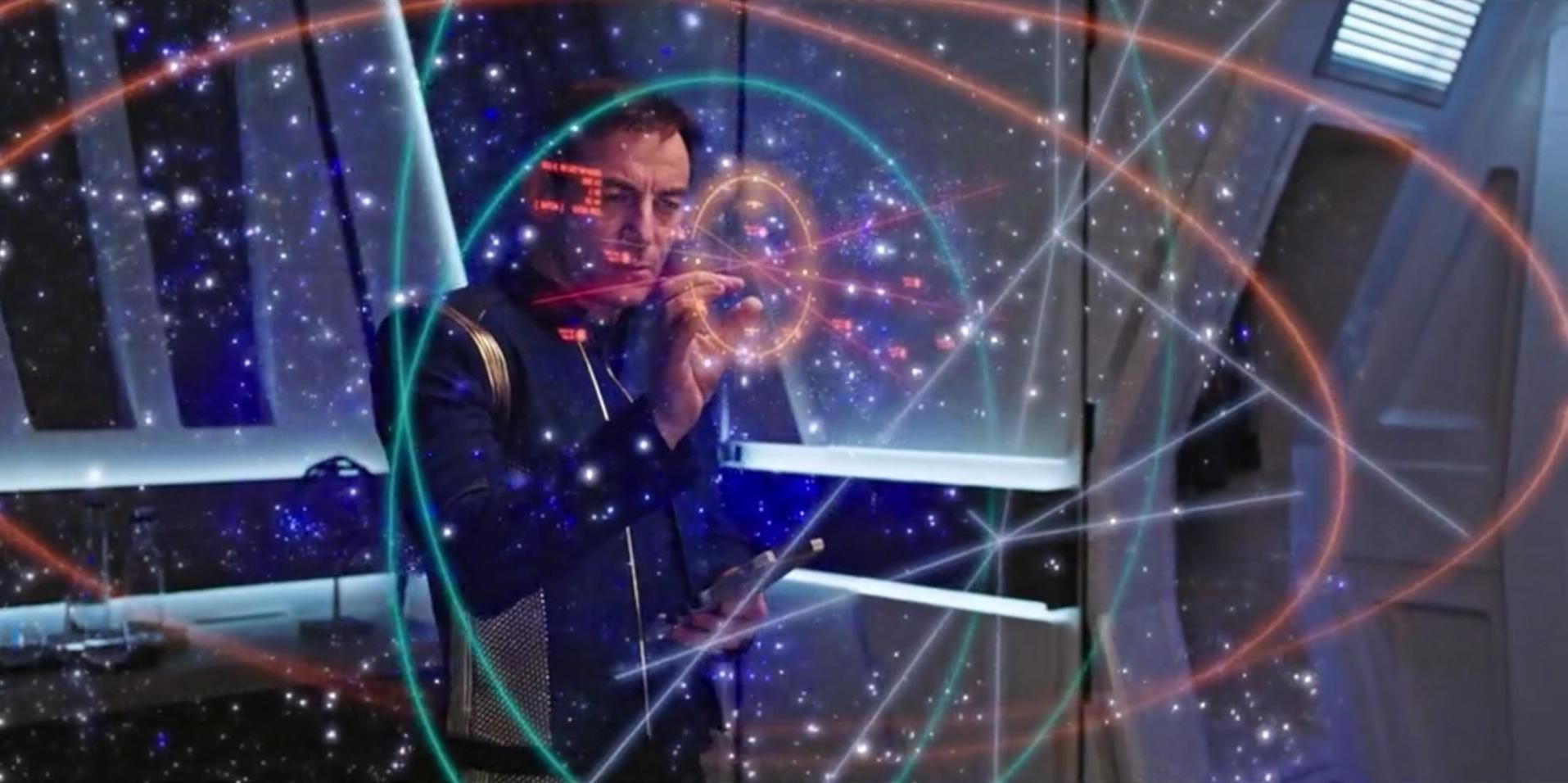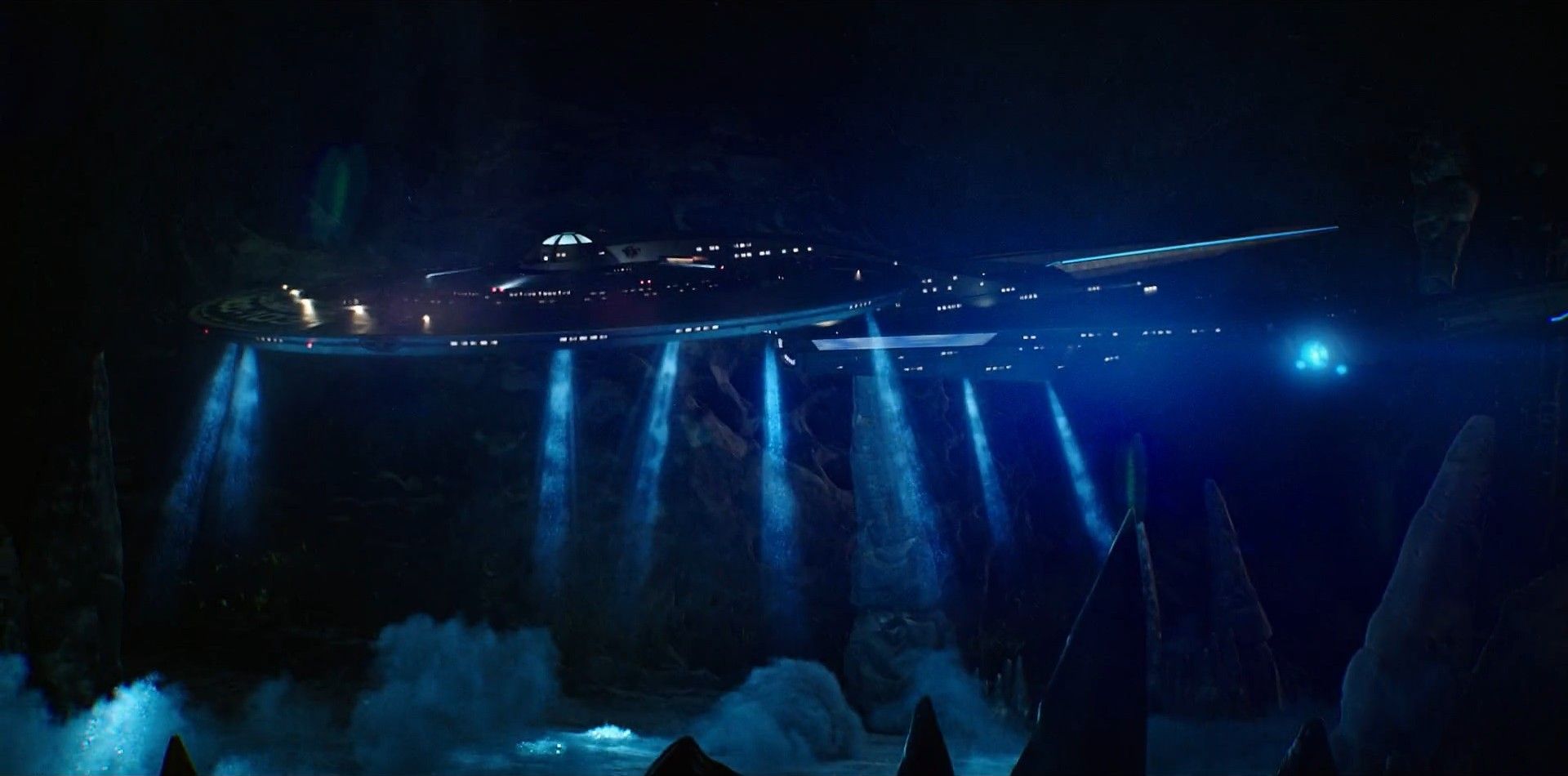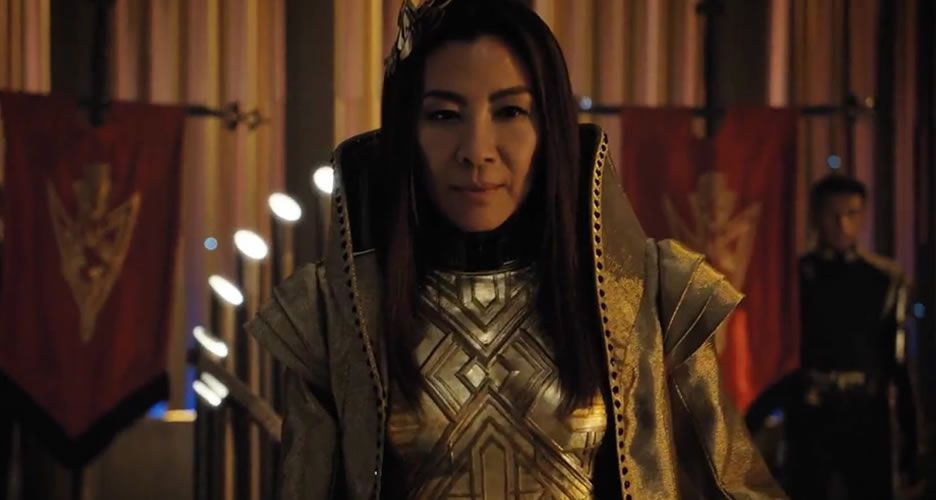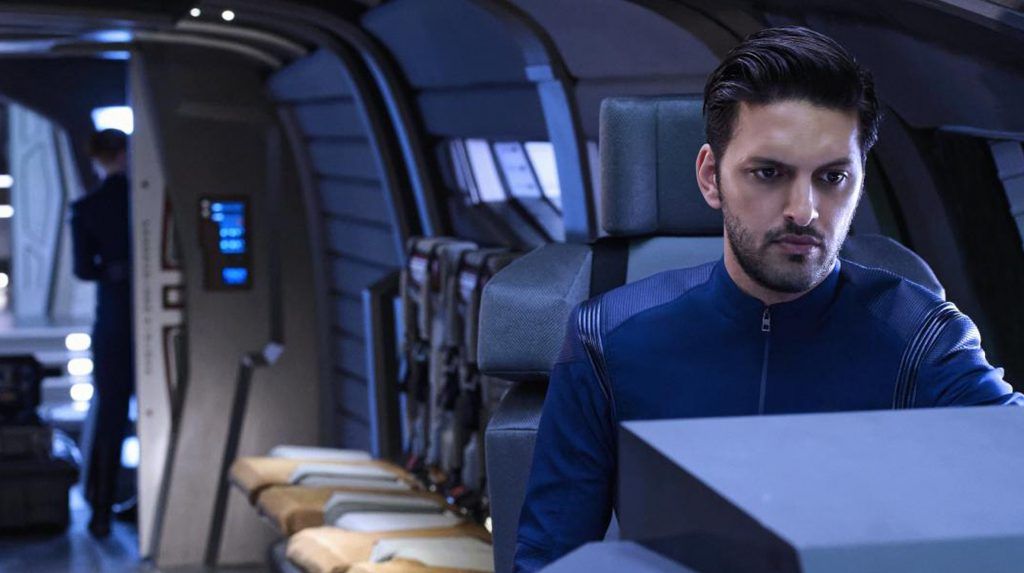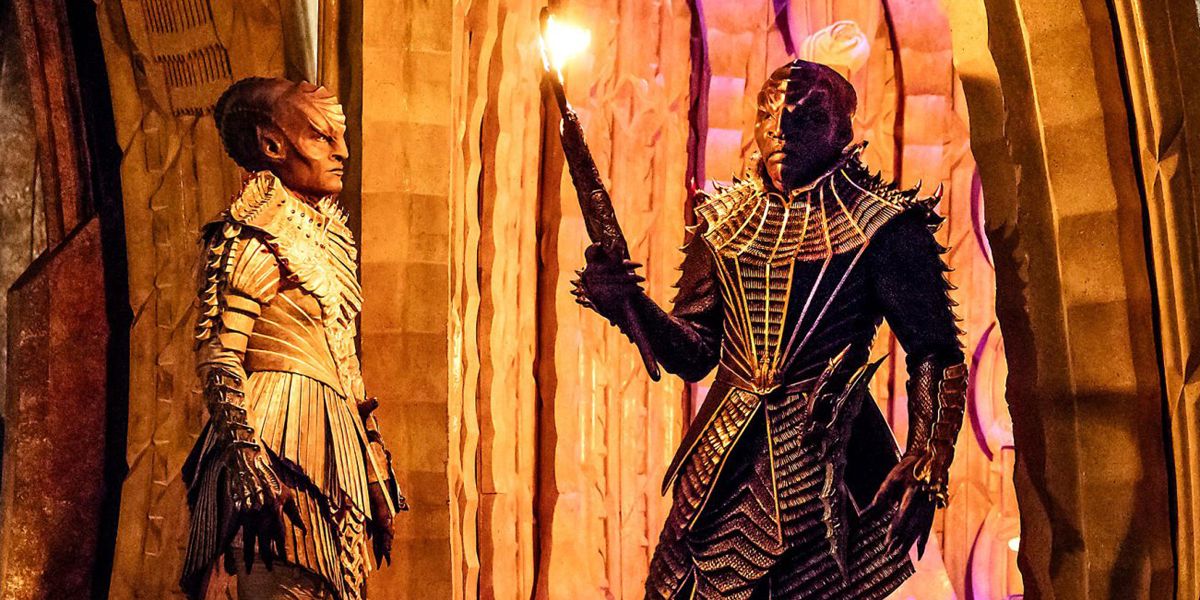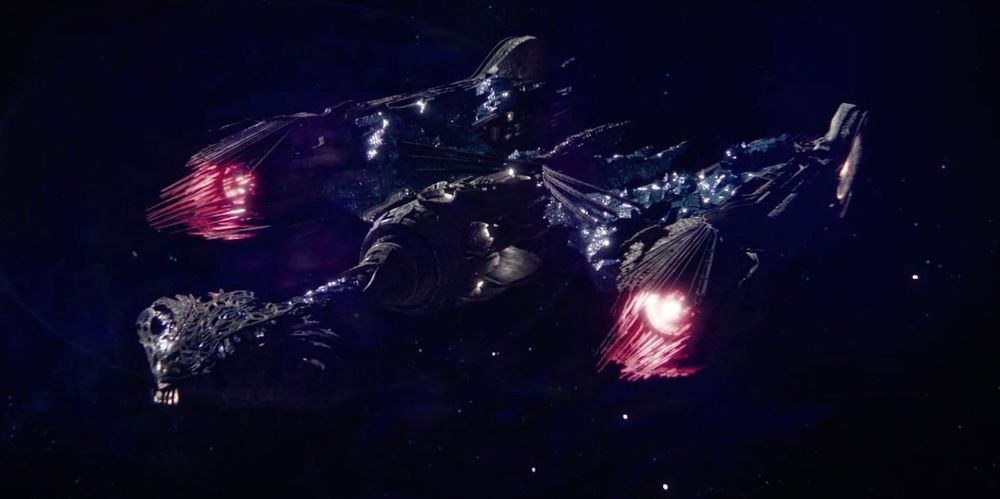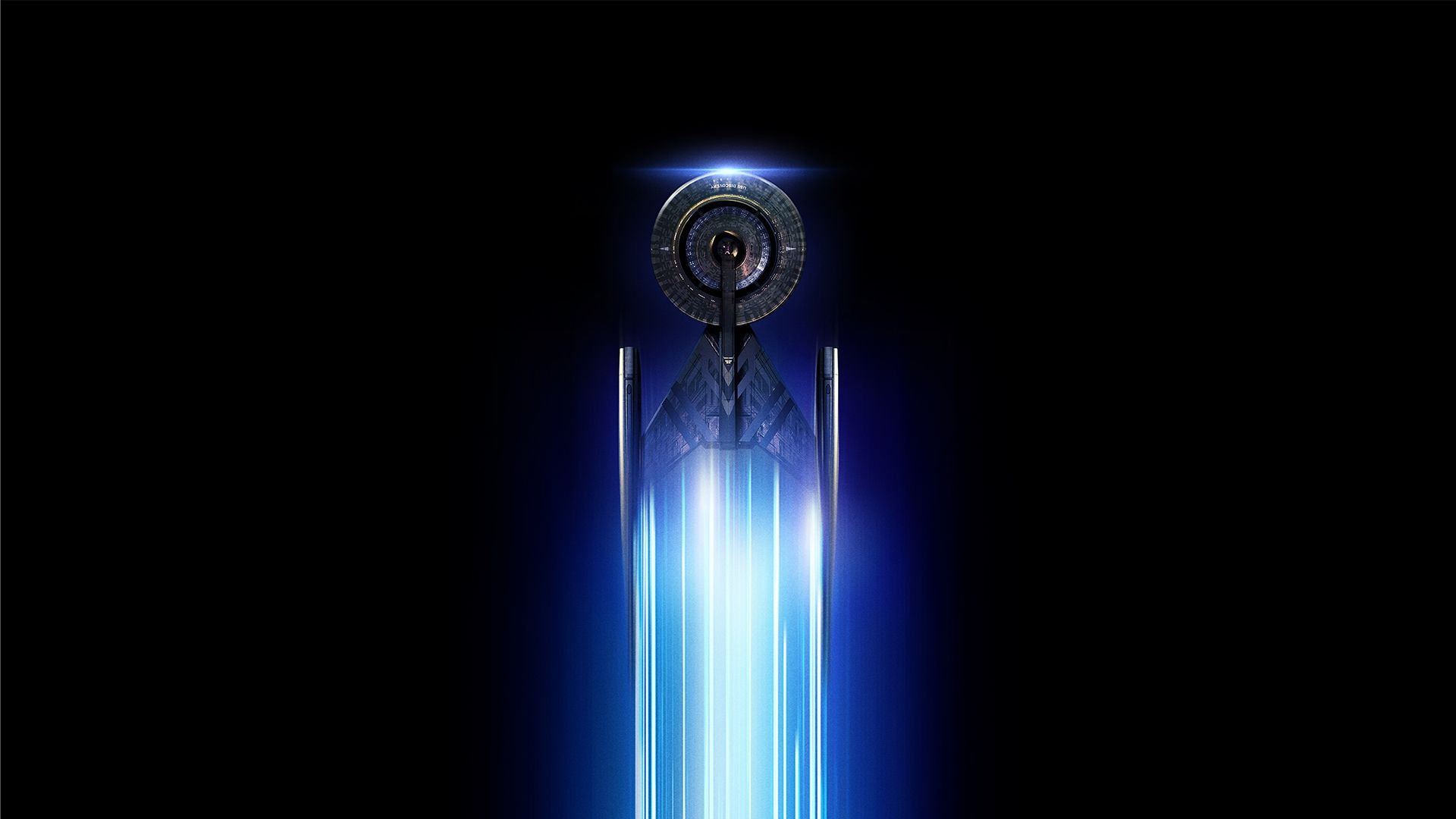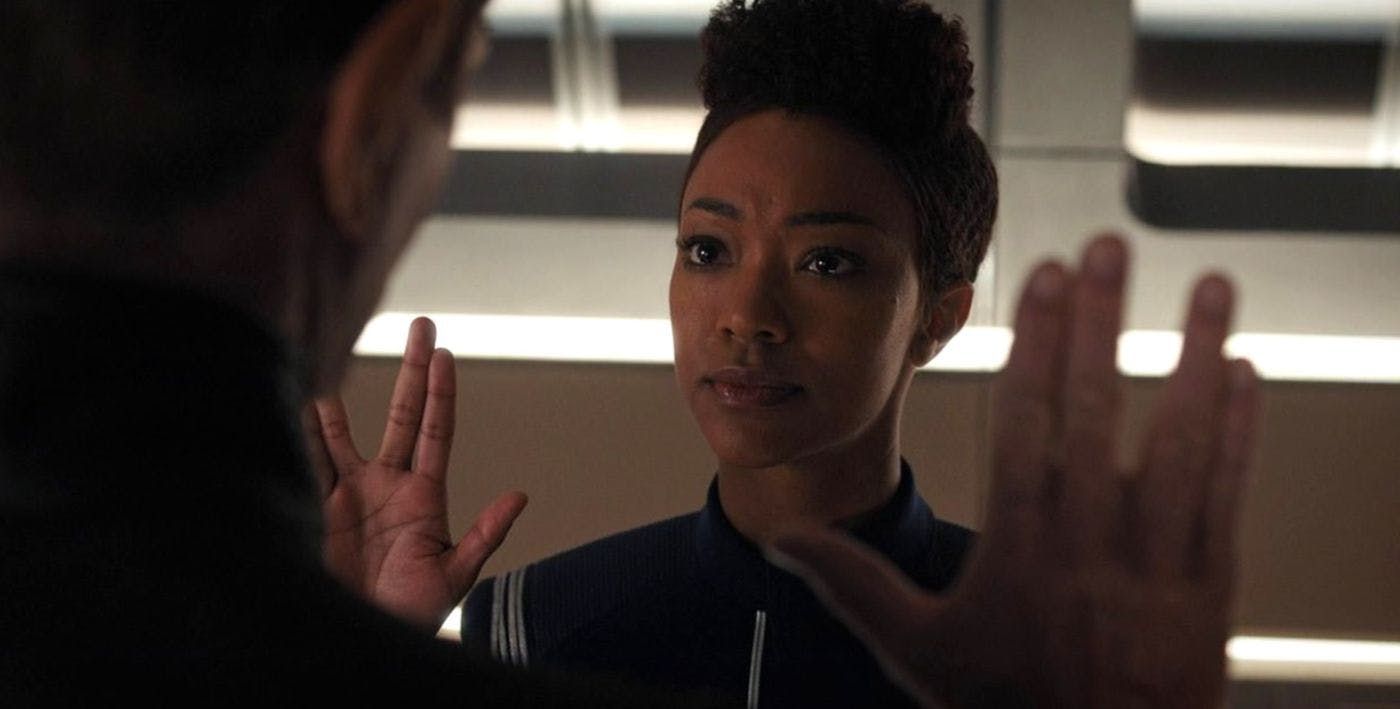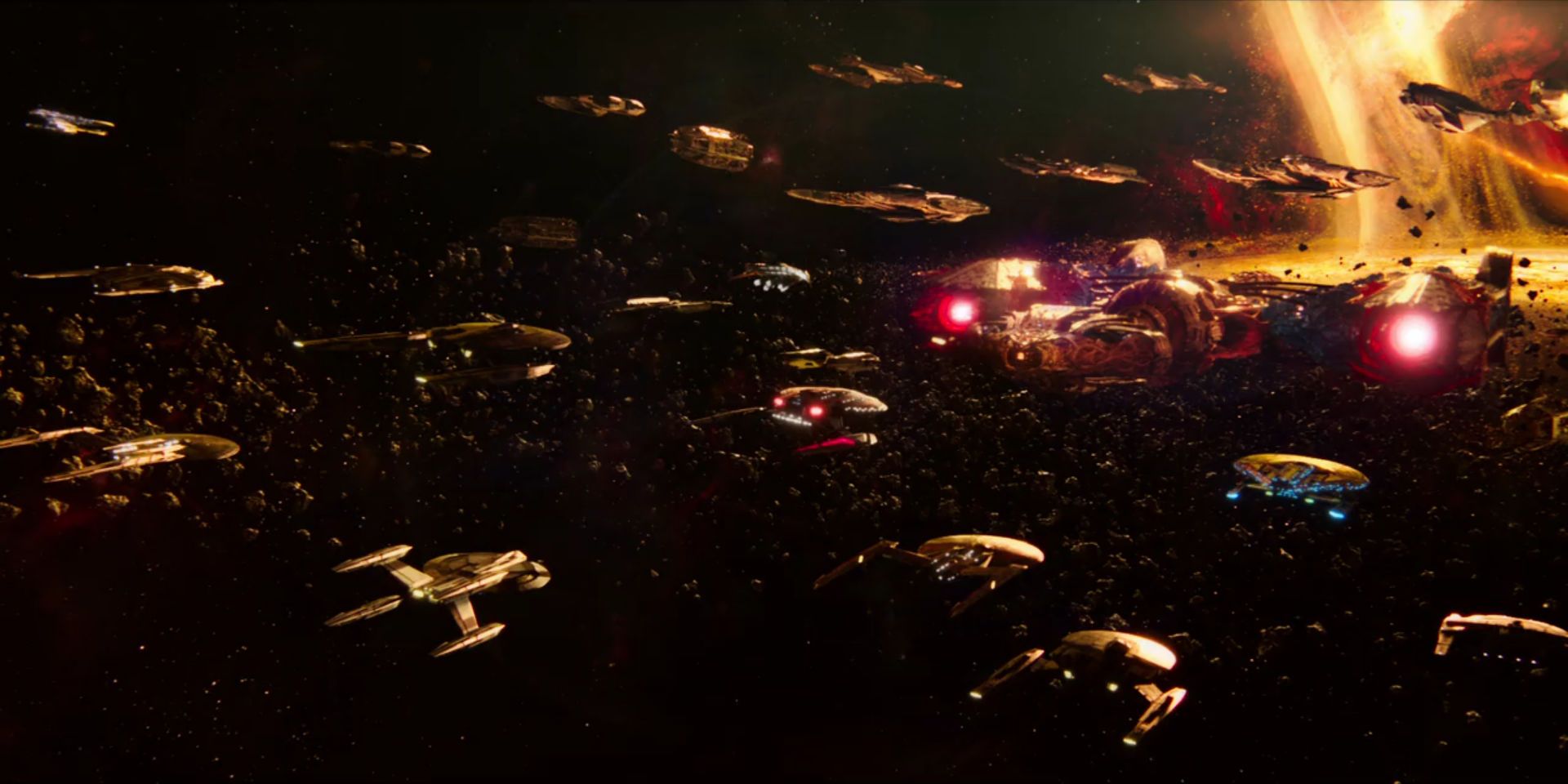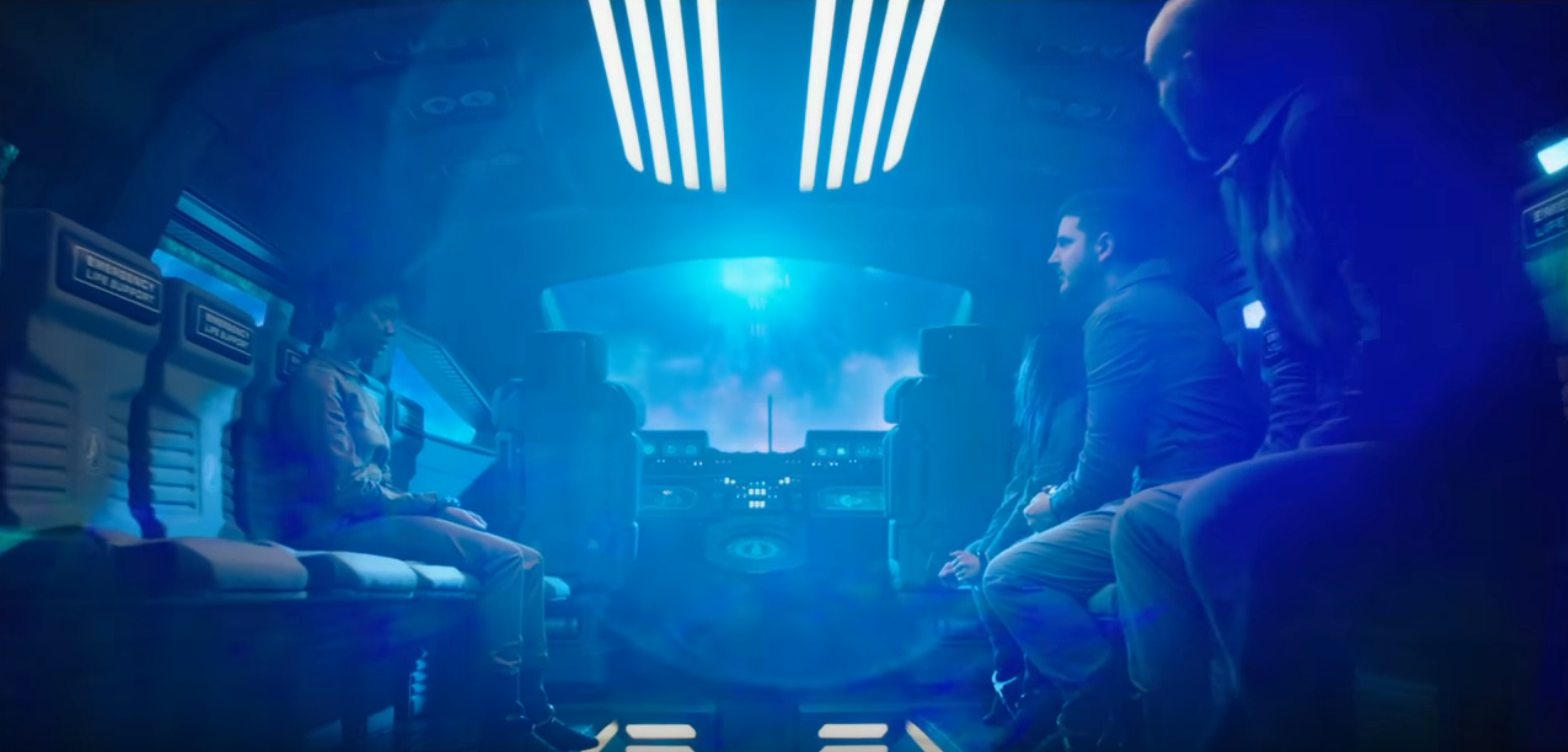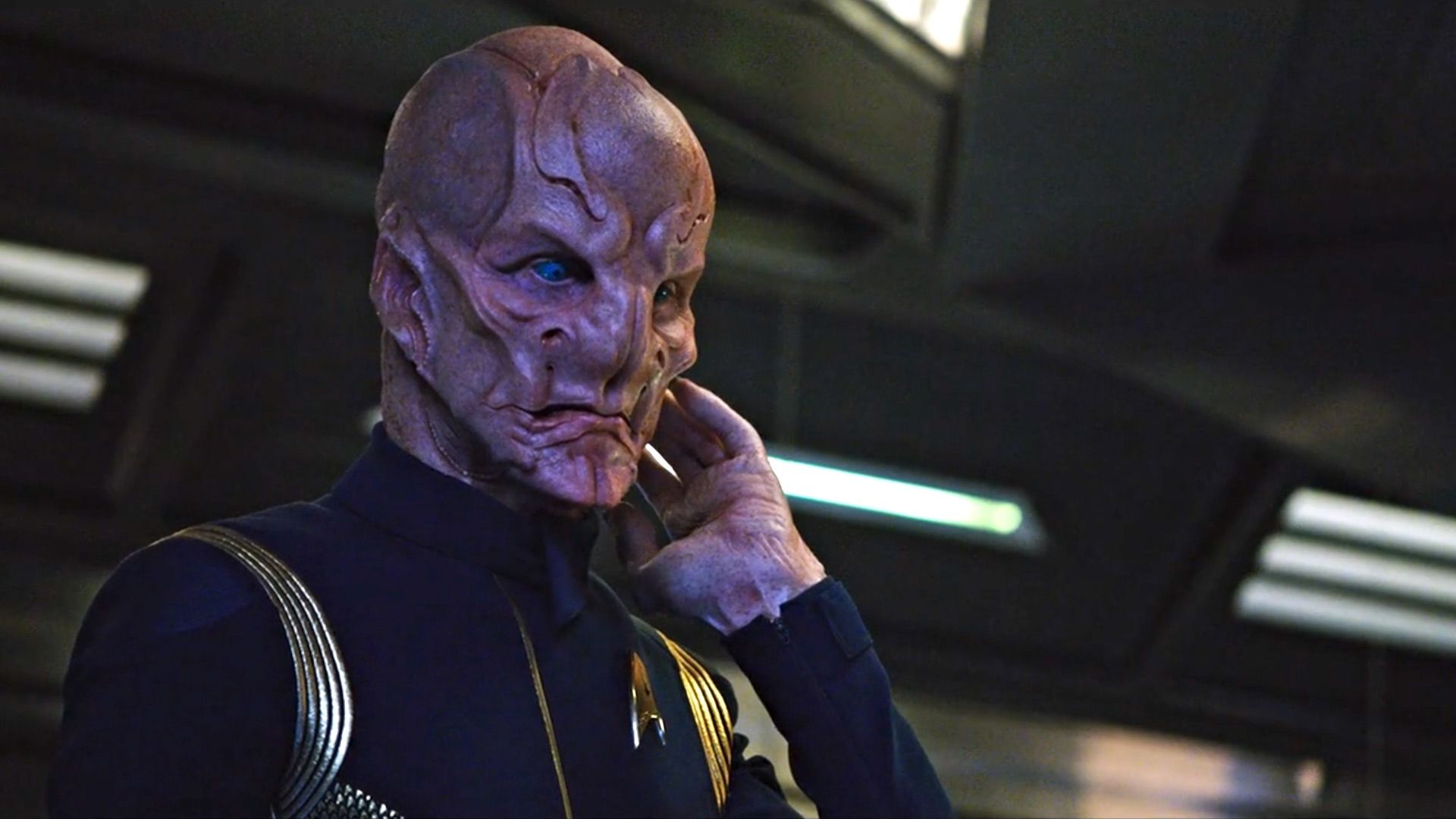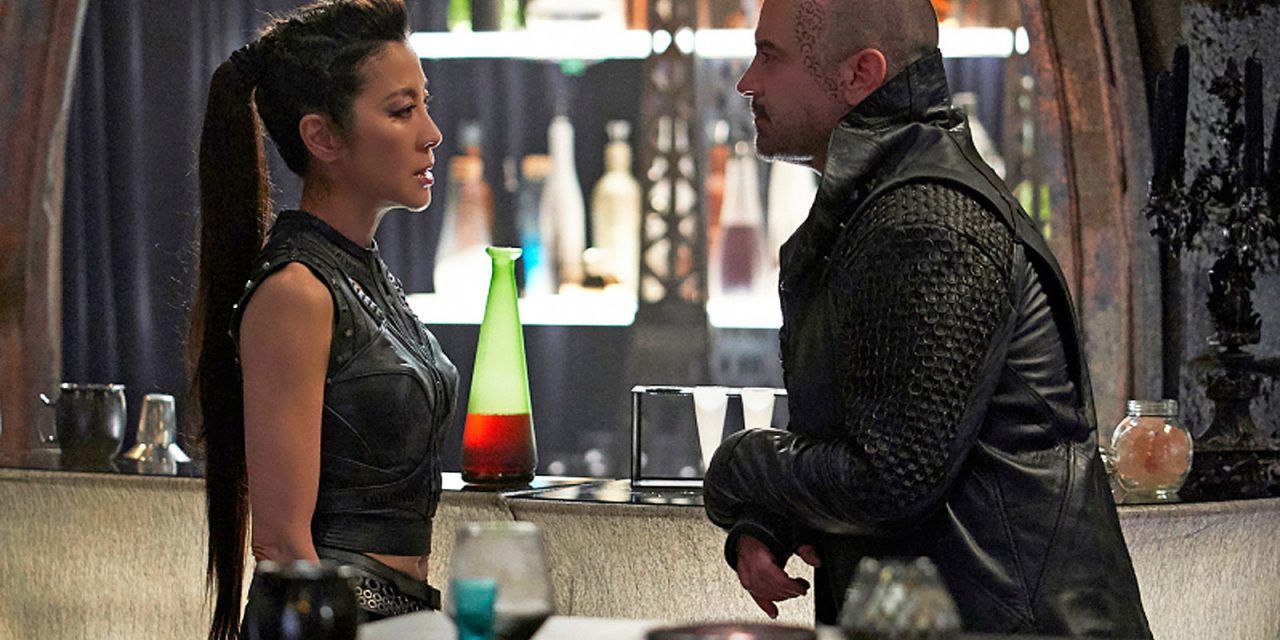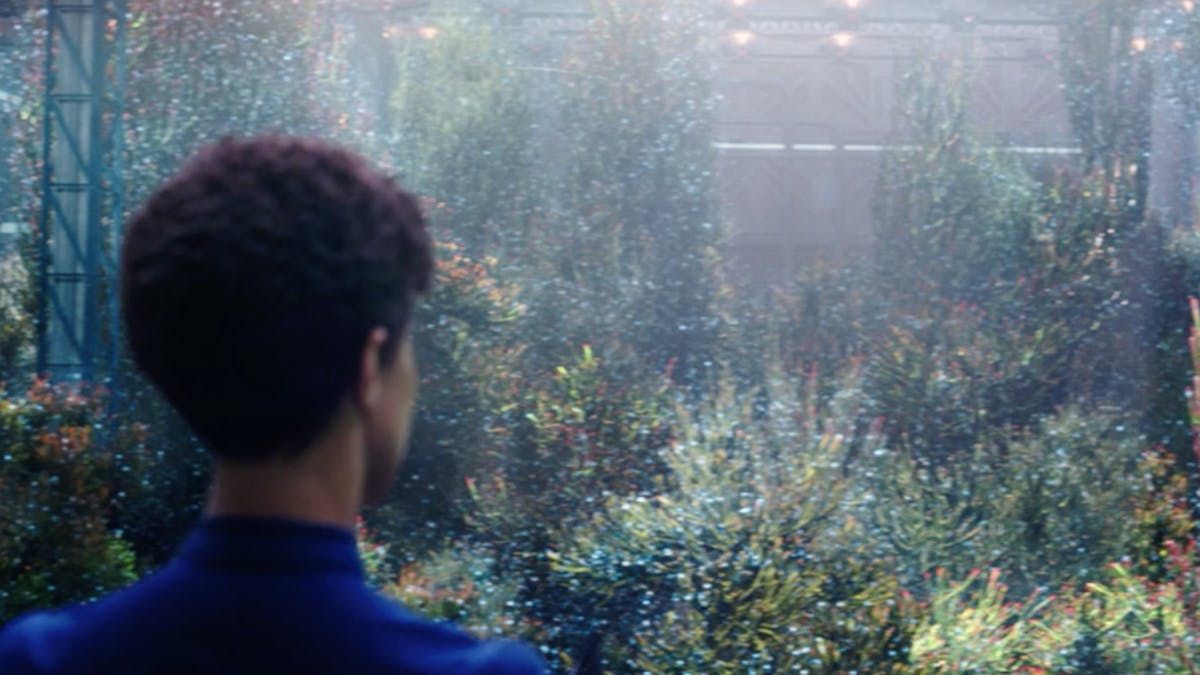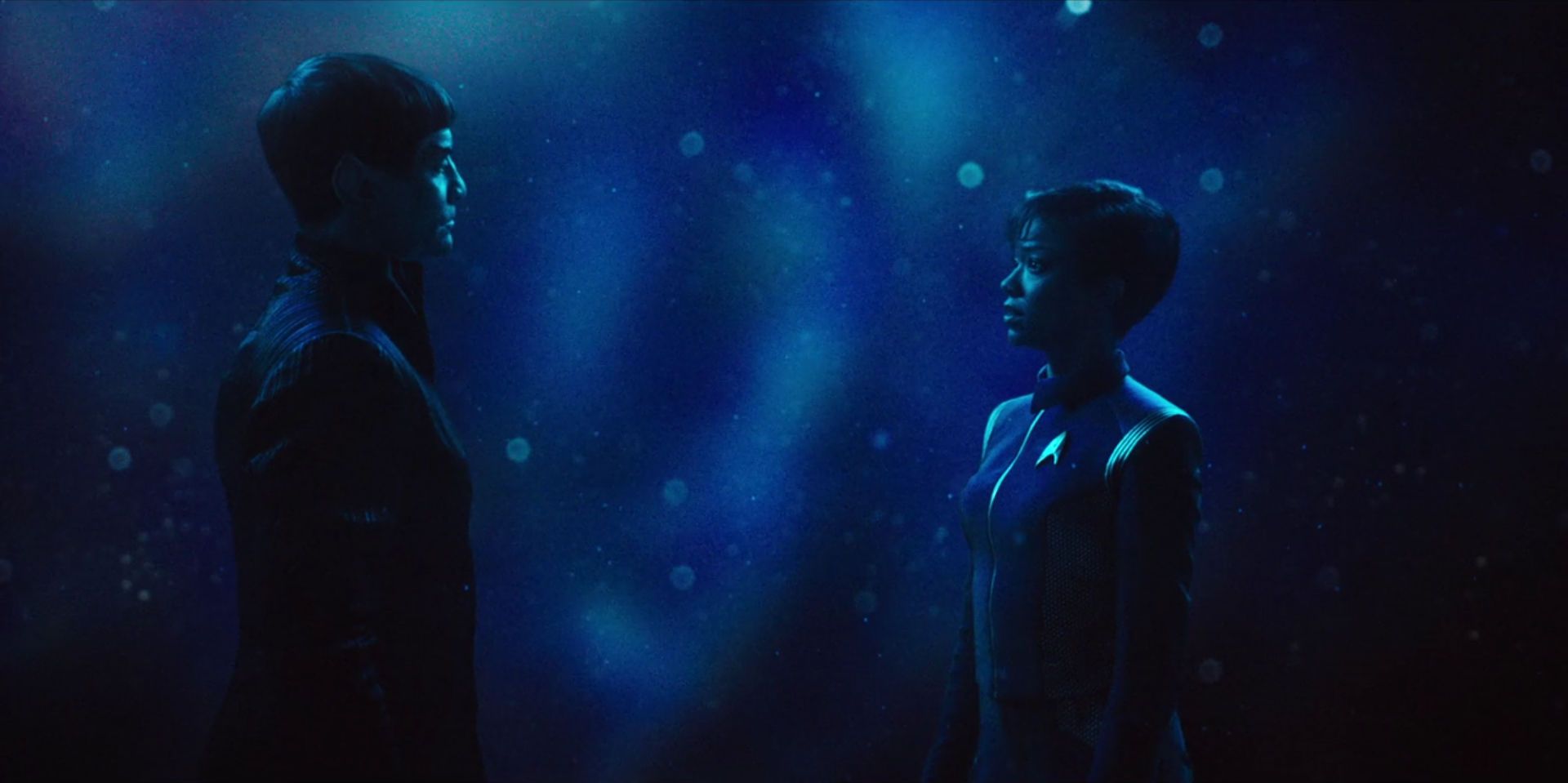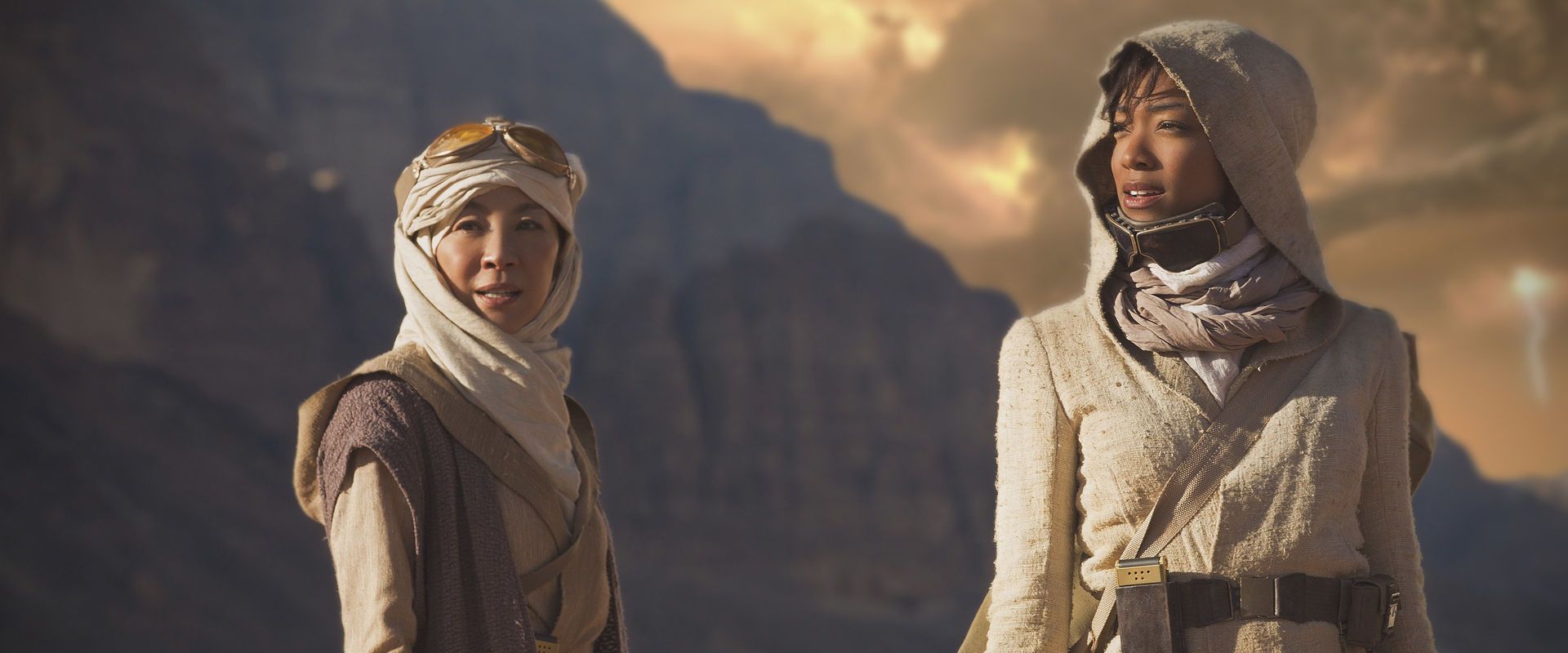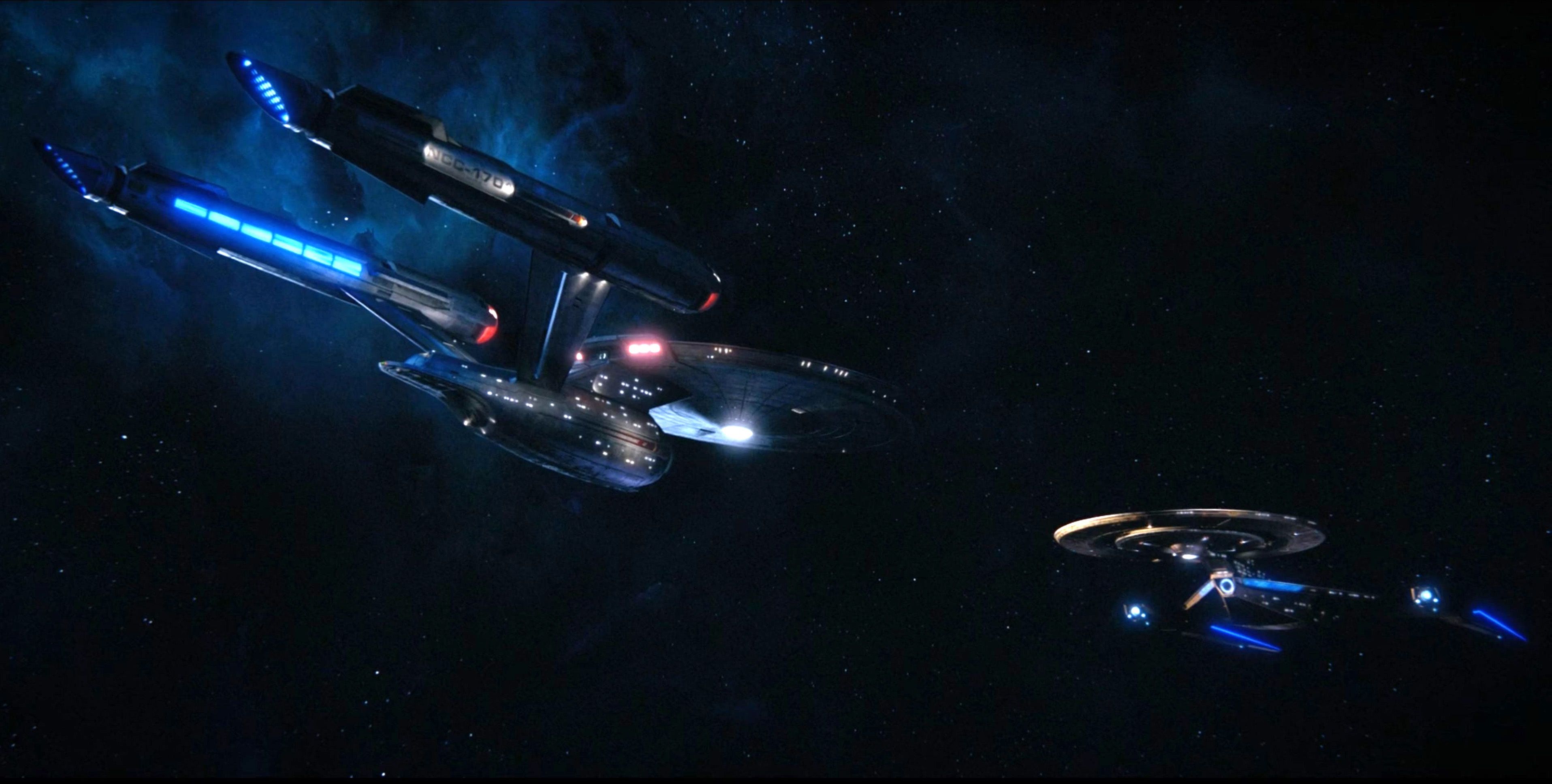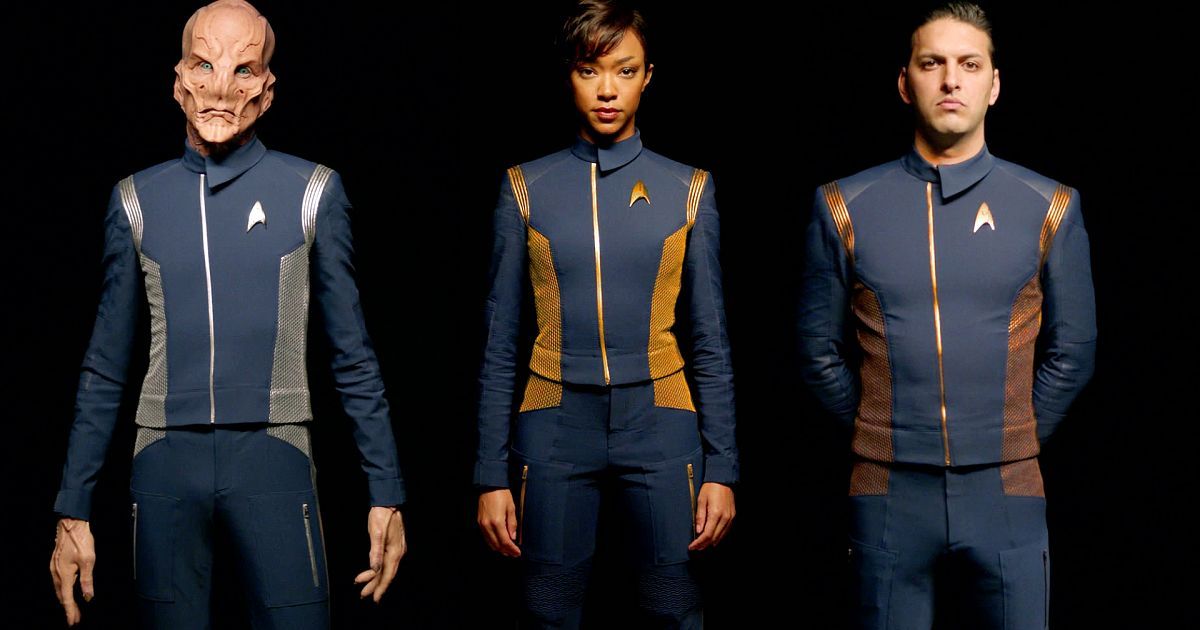Star Trek: Discovery blasted its way into the Trek scene with equal parts controversy and success. No one can doubt the success of the series – it has great ratings, especially considering it was a streaming program, and it was the flagship show for the new CBS All Access, which brought in its most subscribers as a result. Critically, the reception was mixed, but mostly favorable. Star Trek: Discovery was even nominated for multiple awards in visual effects and won the Saturn Award for Best New Media Television series. The look of the series is phenomenal, and with production values rivaling that of the recent Star Trek films, Star Trek on TV has never looked better. Epic space battles, gorgeous bridge shots, exotic locales, and memorable characters are all present in spades, but many fans are still a little uneasy.
One understandable complaint is that it doesn't quite seem like Star Trek. Set about ten years before Kirk's infamous voyages on the Enterprise, the technology looks even more advanced than Star Trek: The Next Generation. The episodes are high on action and low on technical mumbo-jumbo, and the signature cooperation between Federation officers seems replaced by grim alliances and hidden knowledge. Also in a huge departure from tradition, the show doesn't focus on the Captain. Writers insist this story is not a reboot and happens in canon, which leaves an open invitation for us detail-obsessed Star Trek fans to nitpick, which of course, we just kind of feel obligated to do. Here are 20 Things That Make No Sense About Discovery:
Where's the Spore Drive in the Future?
The Spore Drive is one of the coolest and most unique elements to Star Trek: Discovery. In addition to the traditional warp drive, the Discovery uses secret technology utilizing exotic fungal spores to access a Mycelial Network: a subspace organic web that permeates the universe. When activated, this means that the Discovery can leap to any point in the universe instantaneously, making it the fastest ship ever created.
This makes the Discovery well-suited for top-secret missions as this technology is heavily sought after by the Federation's enemies; it would give any civilization a huge edge over others. So, where is it in the future? Even if classified, why not even a whiff of a rumor that such technology existed by the time we got to Picard's era? For whatever reason, this tech vanishes without a trace, just like the Discovery.
Discovery's Tech Is Advanced Compared To The Original Series
As we recall from the original series, Kirk still hand-signed significant documents on clipboards and used push-button technology and clunky tactical displays. However, the crew of Discovery employs holographic interfaces, galaxy-leaping technology like the Spore Drive, and human-machine hybrid interfaces for navigation. Is this even the same universe?
If so, then the Discovery makes Kirk's Enterprise look like a biplane in comparison. Though with the new season, it appears Enterprise might also be going through a retroactive refit. Perhaps the explanation is simple: it's 2018, not 1965, and we have the production technology to make this show look awesome — and it certainly does.
The Federation Would Never Consider Elimination
Near the end of the first season, Earth is facing an imminent Klingon attack with not nearly enough ships to defend it. To counter, the Federation makes the questionable decision to use the Discovery to “leap” inside the Klingon's home planet, Qo’noS (a.k.a Chronos or Kling). Once there, the plan was to have the crew unwittingly place a hydro bomb that would set off a chain reaction to make the planet uninhabitable. The crew discovers the plan before its too late and comes up with an alternative that saves both Qo’noS and Earth.
The Federation argues that in such a dire situation, they can't afford the luxury of principles, but as Burnham points out, principles are all they have. Was the Federation ever this morally depleted? It seems like a darker “Utopian” government than Roddenberry imagined.
The Federation Promotes Georgiou from the Mirror Universe
Well, we sort of know why they would. Philippa Georgiou was a masterful Captain before she was defeated at the hands of the Klingons, but her Mirror Universe counterpart survived and was twice as merciless and masterful as the Georgiou that perished. Once she made it back from the Mirror Universe, the Federation saw an opportunity to pass her off as the original.
But why? Well, to complete morally challenging missions that no other Starfleet Officer would, like destroying the Klingon homeworld. This is a cynical and bleak view of the Federation, likening them to the CIA or a totalitarian empire. If the Federation is already this dark, what makes them different than the Romulans or the Cardassians? Kirk, Picard, Janeway, and Sisko all would have immediately locked Georgiou up. Something's rotten at the top.
If They Have the Ability, Why Don't Klingons Impersonate Humans In the Future?
In one of the surprising turns of the series, Lieutenant Ash Tyler is revealed to be the Klingon “Voq” in disguise. Well, permanent disguise as he can't really change back. As Klingon L'Rell explains: “The one you call 'Tyler' was captured in battle at the binary stars. We harvested his DNA, reconstructed his conscious, and rebuilt his memory. We modified Voq into a shell that appears Human. We grafted his psyche into Tyler's, and in so doing, Voq has given his body and soul for our ideology.”
If this were possible in the Trek universe, then why isn't the Federation riddled with Klingon spies? During Kirk's time, all the way up to the sixth movie, they could have completely taken over with this kind of espionage. It's possible they decided it wasn't ethical, but that doesn't seem like a consideration that the Klingons would take.
Klingons Look Inconsistent Compared To The Rest of Trek
When the Klingons first appeared on Star Trek: Discovery, dedicated fans hardly recognized them as they looked more reptilian than Klingon. Gone were their signature long manes, dramatic eyebrows, and sinister goatees; they actually had no body hair at all, and their leather uniforms and sashes were replaced by elaborate Shakespearean tunics adorned with spiky metal and gauntlets. Plus, they spoke... so... slowly.
As of yet, there may be a way to explain this in the continuity as all the Klingon houses were not yet unified and perhaps one faction had evolved separately than the others. But, no such explanation has yet been offered. To be fair, the original series had different, more human-looking Klingons than the movies and subsequent series, but now, we're all still getting used to calling these strange things Klingons.
How Is It That Klingon Ships Are So Advanced?
In addition to their new look, the Klingons were seen sporting their biggest ship that is ever seen in the canon, an intricate and menacing beast called the Sarcophagus. The Sarcophagus could easily take on several Federation ships at the same time, all while looking like the most formidable spaceship ever created.
The Sarcophagus even had cloaking technology, which according to established canon, was not supposed to be utilized by Klingons until long into Kirk's tenure. Why wasn't the Klingon empire full of these ships? If this is the only one, then why? Later in the season, the Discovery gains the ability to detect the ship and destroy it, but that doesn't explain why they never built another one.
Why Is Star Trek: Discovery Not On The Official CBS Network?
Kicking off a new Star Trek TV show is a major, major event. Many fans would still argue that television is the best medium for the franchise as its rich themes lend themselves well to episodic storytelling. The last time we had a current Star Trek TV series on the air was Star Trek: Enterprise back in 2005.
The fan base is already built-in, and as good as the ratings were on CBS All Access, they could have been through the roof with a platform like network TV. Plus, they could have their cake and eat it too; there would have been nothing stopping them from putting the episodes on streaming once they had aired. Perhaps CBS All Access needed Star Trek to get it going, but it's doubtful the reverse is true.
Why Did Spock Never Mention He Had An Adopted Human Sister?
It's not entirely out of character for Spock to be tight-lipped about his family. In the original series, Spock didn't reveal that Sarek was his father right away, and he also failed to mention that he had been arranged to be married since he was seven. Over 20 years later, it slipped his mind that he had a half-brother named Sybok.
However, this just seems beyond the pale. It seems like it would have come up that his half-sister, Michael Burnham, was a famous mutineer-turned-hero and served on a top-secret ship that helped the Federation win against the Klingons, which ultimately saved planet Earth. That seems like it would make for some great stories over some Romulan Ale and a great way to drive McCoy bonkers. Season two will feature Spock heavily, so we hope we'll get some answers here.
Why No Mention of the Klingon War in the Rest of Trek?
The Federation-Klingon War is shown in great detail in Star Trek: Discovery. Michael Burnham played an instrumental role in the opening skirmish, which was later known as The Battle at the Binary Stars. The war lasted roughly a year, a year that saw the Federation lose about 20% of its territory to the Klingons, and thousands of Starfleet officers lost their lives.
Yet, this is the first time Trek fans are hearing about it. Sure, there's mentions of skirmishes and a few battles in the past canon as the Klingons and the Federation were always at odds with each other in the original series, but this is like learning about recent world history and never learning about World War II. There's nothing that outright contradicts that this happened, even though other much less significant historical events are mentioned several times. This war seems shoe-horned in.
Minimum Security When Transferring Maximum Security Prisoners
When transferring dangerous prisoners between facilities, wouldn't it make sense to secure them properly? In our world, we chain prisoners' ankles and wrists on a secure bus or van and sometimes even chain them together, with multiple armed guards inside the bus in addition to the driver.
So, why should there be even less security on a spaceship? It seems to be just the pilot and no armed guards. Even cuffed, wouldn't it be easy for those prisoners to gang up on the pilot and escape? What happens if something goes wrong? Well, something did go wrong and the pilot didn't make it. Luckily, they were rescued by the Discovery, an event that is not as random as it might seem.
Saru's Danger Sense
Saru is a member of the Kelpien race and the only one in Starfleet. He assumed command of the Discovery several times in the first season.
Members of Saru's species were periodically hunted down and sacrificed by the Ba'ul, a predatory race that was technologically far more advanced. Perhaps as a result of this, Kelpiens developed a sense when fatal danger was nearby. For Kelpiens, “threat ganglia” on the back of their necks raise when this occurs. This can be explained similarly to Spider-Man's “Spider-Sense” in that it produces a heightened feeling of awareness and unease. It's also similar to “Spider-Sense” in that it doesn't really have a rational explanation. How does this work exactly? Is there some kind of premonition happening? Some kind of paranormal activity? So far, this doesn't have much of a scientific explanation.
How Did Section 31 Find Out Georgiou is From The Mirror Universe?
The Federation tried to hide that Georgiou is from the Mirror Universe. So, if Section 31 (the CIA of the Federation) found out, it's a mystery as to how. From their meeting, it's implied he's been briefed, but Section 31 runs independently of the Federation. There's even some speculation that they are really the ones in charge, but it's unlikely that the higher-ups at the Federation would have willingly given up this secret.
Being an intelligence organization, maybe they had a mole on the inside or some kind of surveillance at the very top of the Federation's decisions. If that's the case, then there's nothing they don't know about what's going on. How Section 31 operates is still unknown, so for now, all the operative said about it was, “We are far more resourceful. That's how we found you.”
How Are the Spores So Delicate If The Network Can Exist in Deep Space?
When describing the Spore Drive (also known as the S-Drive) to Michael Burnham, Captain Lorca said: “Imagine a microscopic web that spans the entire cosmos. An intergalactic ecosystem. An infinite number of roads leading everywhere.” Here on Earth, an interconnected network of fungal threads known as the Mycelial Network connects ecosystems over great distances. The writers imagined that the same exists in outer space on a microscopic level, connecting all parts of the universe. That is some cool, interesting science fiction!
This means that this cosmic network is able to survive the void of space, but the spores that the Discovery uses to access the cosmic Mycelial Network must be grown and harvested in exacting conditions. Shouldn't they be tough as nails if they're related to the cosmic network they are communicating with? This doesn't quite add up.
When Did Sarek Become So Telepathically Powerful?
As we've seen over the past fifty years of canon or so, Vulcans are a surprisingly advanced species. In addition to their impeccable logic, incredible intelligence, and loyalty to the Federation, they have a few more surprising skills. They can do quite a few things that humans can't, like the Vulcan nerve pinch or the Vulcan mind meld. As seen in Star Trek III: The Search for Spock, they can also temporarily house their “Katra” (living spirit) inside another person's body.
But, at no point in the series were we able to see a Vulcan mentally communicate over a great distance, akin to mental telepathy or holographic projection. Sarek accomplishes this with his adoptive daughter, Michael Burnham. Since they have mind-melded before, it is theorized that Burnham has a piece of Sarek's “Katra” so they can communicate this way, but can other Vulcans do this? And if so, why haven't we seen it before?
The First Two Episodes
Structurally, the opening two episodes of Star Trek: Discovery are problematic. That's because they don't begin at the beginning, but begin before the beginning, like a prequel. The show fans thought they were watching was actually kind of cool. It would have been intriguing to see more adventures aboard the U.S.S. Shenzhou, but that turned out not to be the show we were in for.
It's not long before the U.S.S. Shenzhou is destroyed by Klingons, Captain Georgiou slain, and our hero Michael Burnham is already convicted as a traitor. She doesn't even board the Discovery until episode three. It's a weird way to start a show since we have to go through introductions twice. Wouldn't it have it been better to start on the Discovery and slowly unravel the mystery of what happened in the past through flashbacks?
Timeline Problems
In the upcoming season, the Discovery crew will meet Captain Pike on the Enterprise and Spock will be featured heavily in the storyline, but it's still uncertain exactly where we are on the timeline. If it's ten years before Kirk, then technically, Captain April would be in charge.
However, the writers insist it's all the same timeline. At WonderCon 2018, co-showrunner Aaron Harberts confirmed: “The idea was to always be in the Prime Timeline. Obviously, there are questions and concerns and things that are different. Our technology is a little different...We are our own show in a lot of ways. Season two is really exciting for us. This is our opportunity to really show how Discovery fits into this Prime Timeline. We are firmly committed to that.” Hopefully, future stories will help explain the other apparent inconsistencies in the timeline.
Why Is the Crew So Lenient On Ash?
By the time Captain Lorca “rescues” Ash from being prisoner aboard a Klingon starship, he is already experiencing PTSD because of the harsh conditions of his “interrogation.” He is not aware yet, at least consciously, that he is a sleeper agent with the Klingon's Voq's identity locked inside his brain. In many ways, he is only a shadow of what Ash once was.
Concerned for the welfare of his adoptive crew, he asks to be examined by Dr. Culber, but when he comes close to discovering the truth, Ash ends Culber's life. Eventually, the truth comes out and Voq's personality is extracted from his brain. Tyler still considers himself a threat to the crew and asks to be confined to the Brig. Bafflingly, Saru settles for just an electronic monitor. After all they've been through, why take the chance?
Why Do The Uniforms Look So Unlike the Original Series?
This one is just a really hard one to explain away. Given that the writers insist this is the Prime Timeline, the same on the original series, how do we explain how different the uniforms are? Even the Kelvin timeline tried to make the uniforms look like the original series.
A clue can be derived from the trailer of the second season, where Captain Pike wears a uniform that looks much more like the original series, with the exception of the asymmetrical collar like they wear on Discovery. An argument can be made that because they are on a top-secret ship, their uniforms conform to a different look and protocol. But, the admiralty has similar uniforms to Discovery, so that doesn't quite cut it either. Maybe one of the tailors is from the Mirror Universe...
Why is Everyone so Unfriendly on the Discovery?
For at least the first half, Trek fans may have been baffled by how unfriendly the crew of the Discovery seems to be. With the exception of the unflappably perky Sylvia Tilly, everyone else seems like they're going through a divorce with each other. Some things might explain it, though. Captain Lorca is from the Mirror Universe, but the crew doesn't know it; the story is told from the perspective of Burnham, who everyone thinks is a traitor; tensions are high because they haven't perfected the Spore Drive yet, and they're in the middle of a war.
Also, perhaps because of three different Captains, with Stamets going mad and two more traitors being revealed on the crew... maybe they never have a chance to gel. But, one thing we'd love to see is a crew well-bonded and ready to joke around every so often.
--
What else do you think doesn't quite add up on Discovery? Let us know in the comments below!

